INDIAN ARMED FORCES CHIEFS ON OUR RELENTLESS AND FOCUSED PUBLISHING EFFORTS

The insightful articles, inspiring narrations and analytical perspectives presented by the Editorial Team, establish an alluring connect with the reader. My compliments and best wishes to SP Guide Publications.

"Over the past 60 years, the growth of SP Guide Publications has mirrored the rising stature of Indian Navy. Its well-researched and informative magazines on Defence and Aerospace sector have served to shape an educated opinion of our military personnel, policy makers and the public alike. I wish SP's Publication team continued success, fair winds and following seas in all future endeavour!"

Since, its inception in 1964, SP Guide Publications has consistently demonstrated commitment to high-quality journalism in the aerospace and defence sectors, earning a well-deserved reputation as Asia's largest media house in this domain. I wish SP Guide Publications continued success in its pursuit of excellence.
- Operation Sindoor: Resolute yet Restrained
- India’s Operation Sindoor Sends a Clear Message to Terror and the World – ‘ZERO TOLERANCE’
- Japan and India set forth a defence cooperation consultancy framework, talks on tank and jet engines
- Terrorist Attack in Pahalgam in Kashmir: Unfolding a long surgical war against PAK
- Lt General Pratik Sharma takes over Command of Indian Army's Northern Command
PLA EW and Close Air Support
Mastering the spectrum and redefining warfare in the Electromagnetic Age
 |
The Author is Former Director General of Information Systems and A Special Forces Veteran, Indian Army |
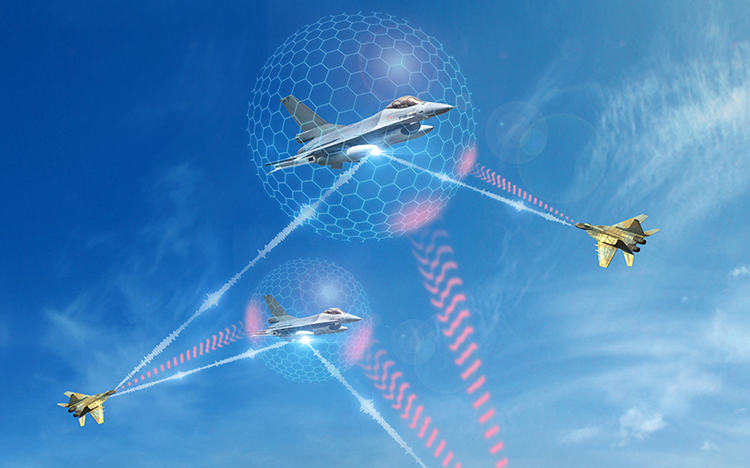
Electronic Warfare (EW) encompasses all actions in the entire Electromagnetic (EM) Spectrum to intercept, analyse, manipulate, or suppress the enemy's use of the spectrum as well as to protect friendly use of the spectrum from similar attack by an enemy. The EM spectrum includes both the visible and invisible ranges, measured in megahertz, of the spectrum. The use of signals intercepting, locating, identifying, detecting, jamming, disrupting, deceiving, protecting, analysing, and cryptanalysis is EW. Electronic warfare can be used to provide intelligence or combat power like jamming, disruption, or deception. The purpose of EW is to deny the enemy the advantage of and ensure its own unimpeded access to the Electromagnetic Spectrum (EM).
One application of EW is collecting information from the enemy's radio signal or detecting an incoming missile from radar. There are three major subdivisions within EW: electronic attack, electronic protection, and electronic warfare support. Electronic attack is an integral part of a military operation, enabling and empowering land, sea and air forces to achieve their missions; denying the enemy to communicate, navigate, gather intelligence or locate targets on the battlefield.
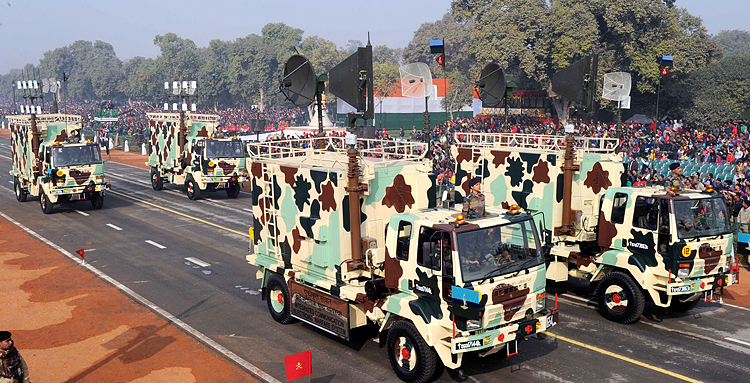
Modern EW systems rely on transmitting and receiving antennas composed of many individual units, each governed by a computer. Theoretically, these units can engage distinct targets but practical applications often result in the antenna being fractured into smaller segments with limited power and narrow frequency ranges for emitting electromagnetic waves. This approach, commonly referred to as multi-target digital array technology, has primarily been confined to radars with modest power and bandwidth demands. Presently, most EW equipment in use can only aim high-power, continuous suppression against targets in more or less the same direction. Prominent examples for this technology include EW pods deployed on US F-15 and F-16 or Russian MiG-27 and MiG-29 fighter jets.
The purpose of EW is to deny the enemy the advantage of and ensure its own unimpeded access to the Electromagnetic Spectrum (EM)
However, media reports of January 3, 2024 indicate that China has developed a new-generation EW weapon; the new weapon is designed to launch multiple beams from a single antenna, targeting various objects "simultaneously". Chinese scientist, led by Professor Jiang Weixiang of Southeast University in Nanjing, the research team published the design concepts, key algorithms and manufacturing methods of the weapon in a peer-reviewed paper featured in the November 2023 issue of the Journal of University of Electronic Science and Technology of China.
Laboratory tests conducted on a miniaturised version of this new-generation weapon have shown its ability to operate at high power and emit electromagnetic waves across a broad frequency range. Even if enemy radar or communication devices employ anti-jamming techniques like frequency hopping, they will still be unable to evade suppression by this weapon.
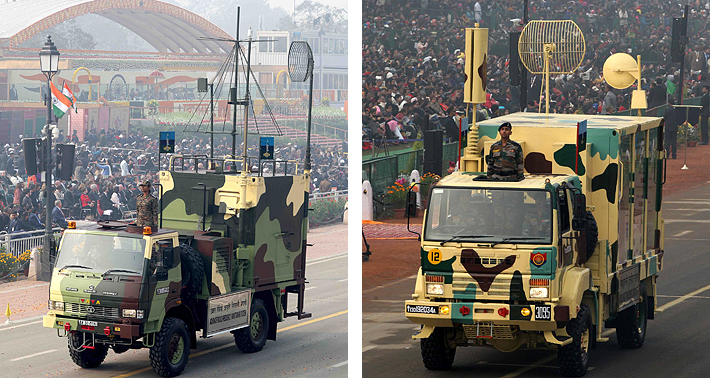
In the paper, Chinese scientists have predicted that future warfare will undergo significant changes characterised by increasingly fierce competition between opposing forces in the EM spectrum battlefield; the side which is less developed technologically will lose control of the EM spectrum even before losing territory. The paper further says that losing control of the EM spectrum will inevitably lead to the loss of air and sea control.
Israel's Scorpius-SP pod, produced by Israel Aerospace Industries (IAI), is a new-generation EW weapon, which can be mounted under the wing of a fighter aircraft. According to IAI, it can identify and simultaneously suppress targets in multiple directions, including fighter jets, ground radars and even incoming missiles. In June 2022, Israel had announced that an undisclosed Asian country had acquired the Scorpius-SP pod in a multimillion-dollar deal.
China has developed a new-generation EW weapon; the new weapon is designed to launch multiple beams from a single antenna, targeting various objects 'simultaneously'
The Chinese scientists have apparently taken a different technological approach from Israel; the Chinese antenna features a honeycomb-like, open-ended, waveguide structure, whereas Israel's antenna comprises numerous sharp cones. The Chinese antenna array is reportedly composed of cost-effective components, to operate at maximum capacity while concurrently suppressing multiple targets in varying directions through sophisticated manipulation of the electromagnetic waves emitted by each unit. Also, the frequency of suppression can be adjusted for each target. However, the amount and complexity of numerical processing information increases exponentially with the number of targets, which can overwhelm military computer chips. But China's new EW weapon significantly reduces the computational load, paving the way for the widespread adoption of this technology globally.
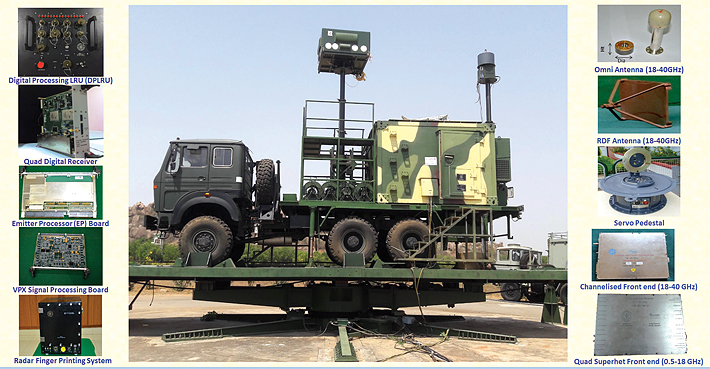
The Indian Army showcased its electronic intelligence (ELINT) operations capabilities at the 76th Army Day in Lucknow this year. With 248 total radars and 26 active on January 15, the system constantly monitored and analysed electronic signals across a vast spectrum – real-time data analytics. At the same time, we need next-generation EW weaponry, which will keep evolving more in the future also.
Writing for the American Foreign Military Studies Office (FMSO) in January 2024, Kevin McCauley, former US intelligence Officer writes that the PLA is focused on improving its close air support capabilities. According to him, the ability of PLA to carry out close air firepower support missions has improved over the past decades: PLA considers aviation support to ground forces as another form of fire support; command and coordination have changed over time although details of the process are not entirely clear; while the PLA defines close air support against ground and maritime targets, there is a notable focus on support to ground units.
Israel's Scorpius-SP pod can identify and simultaneously suppress targets in multiple directions, including fighter jets, ground radars and even incoming missiles
He further writes that the PLA Air Force (PLAAF) fire support is likely meant to be employed against deeper tactical targets, although the proximity of strikes is dependent on the precision of the munition employed. Army Aviation is likely intended to strike targets closer to friendly troops. Unmanned combat aerial vehicles (UCAV) will be used to a greater degree in the future, integrating intelligent technologies to coordinate swarm attacks against multiple targets or in sustained attacks against a single target.
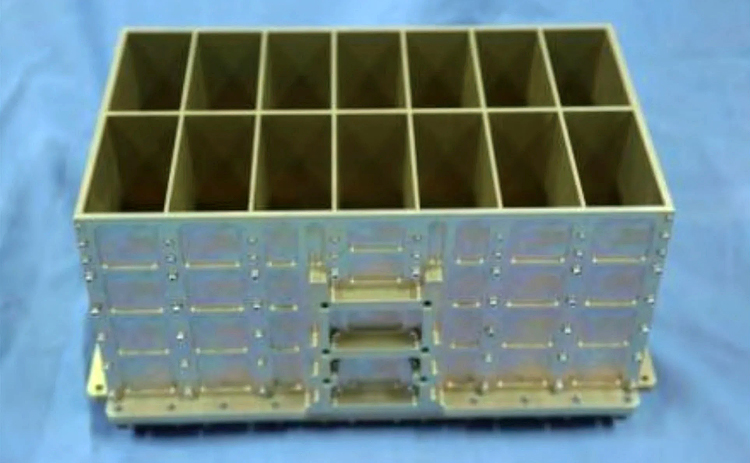
McCauley opines that the PLA's command and coordination structure for close air firepower support appears both more streamlined and simpler compared to US close air support. It also does not appear as integrated with ground maneuver. The PLA is capable of air-to-ground precision strikes directly supporting ground force's tactical combat but likely faces challenges in fully integrating these capabilities into a complex maneuver operation. Also, PLAAF is fielding increasingly advanced reconnaissance and targeting systems; emphasis on precision munitions improves the capability to strike targets closer to friendly troops and closely integrate fires with maneuver. Improved close air firepower support would significantly enhance ground combat and maneuver warfare. Improvements to China's domestic chip-building capability and the development of a capable and redundant Beidou global navigation satellite system (GNSS) likely will support this effort.
Finally, McCauley writes that recent research sponsored by China increasingly is influenced by America's close air support theory and practice. PLA-affiliated scholars are closely studying the US CAS process, communications, coordination, and weapons systems. While it is unlikely the PLA will copy US procedures and organisations completely, it will likely adopt features it believes will improve its aerial fire support capabilities.
Indian policy makers and the Armed Forces need to acknowledge the above developments.





